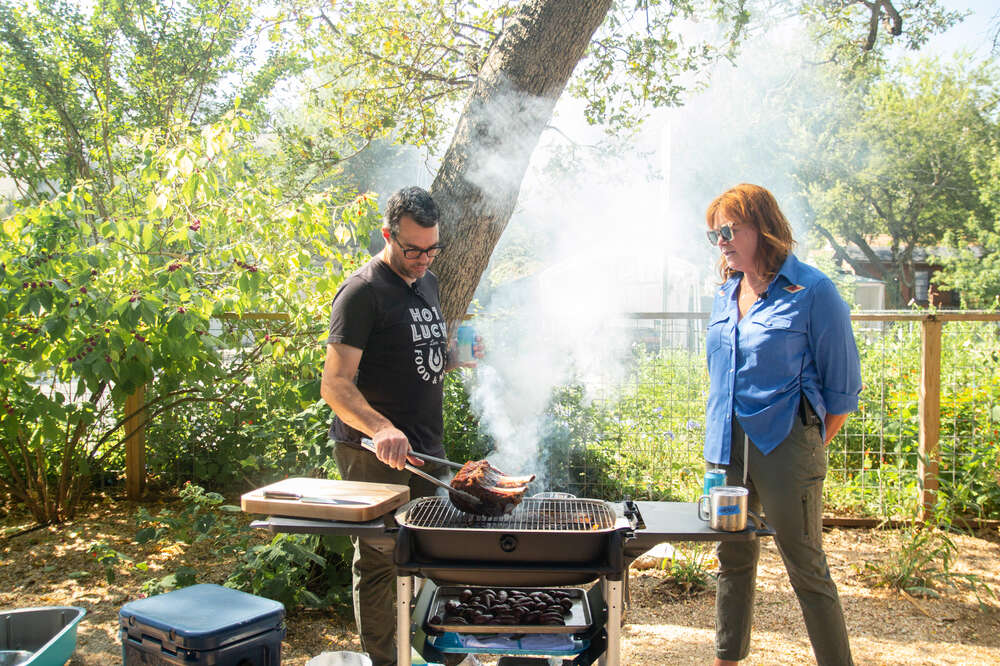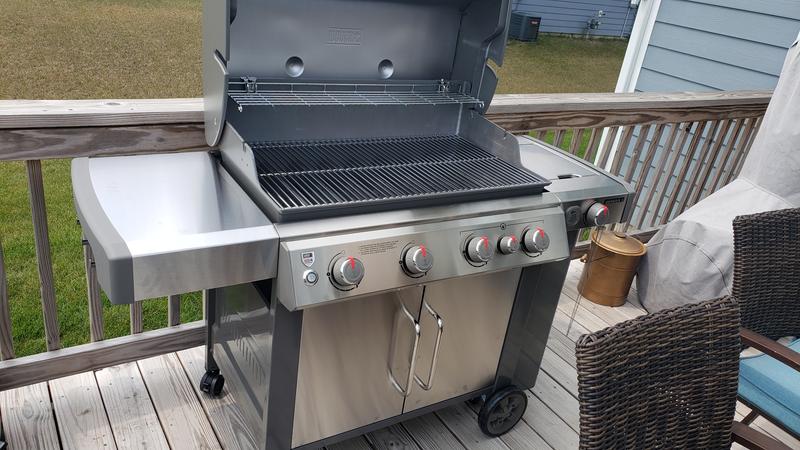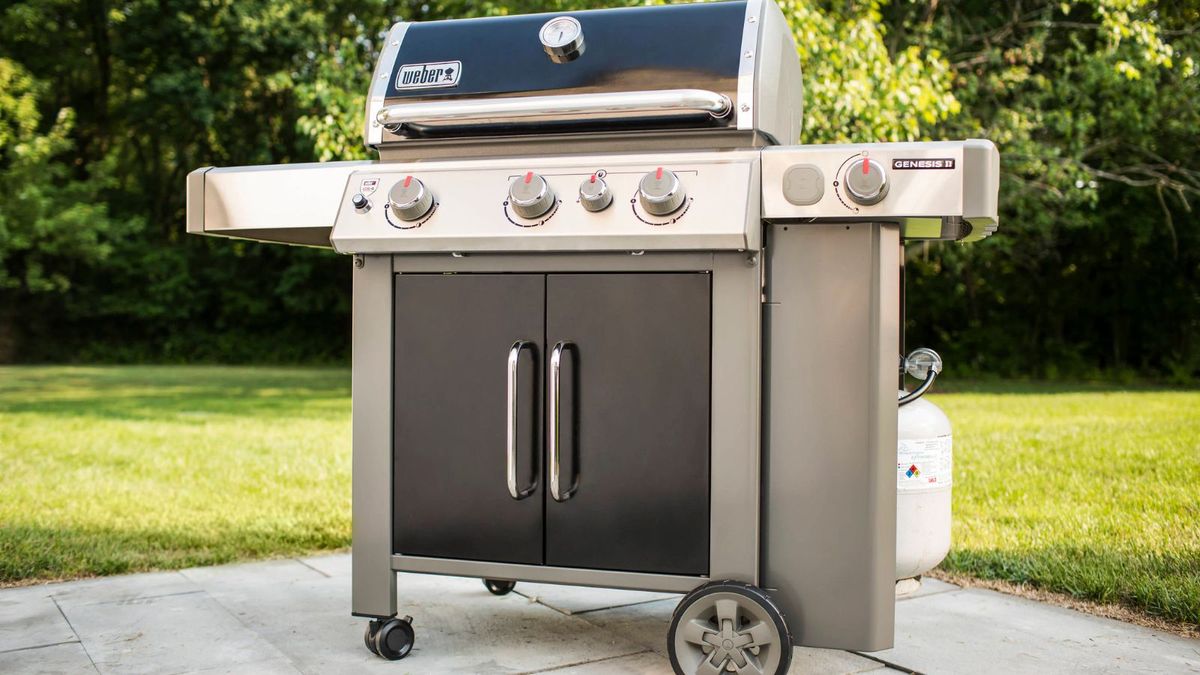
Cooking a beef brisket can seem daunting, but with the right approach and technique, you can achieve mouth-watering results using a gas grill. In this detailed guide, we'll explore how to cook a beef brisket on a gas grill, ensuring you master the art of BBQ that will leave your guests in awe.
Whether you are a seasoned griller or just starting, preparing a perfect beef brisket on a gas grill requires dedication, patience, and some smart tips. From selecting the right cut to mastering the cooking process, we've got you covered. Let's dive in!

Choosing the Perfect Brisket
The journey of how to cook a beef brisket on a gas grill starts with selecting the right piece of meat. Beef brisket is divided into two main parts the flat cut and the point cut. The flat cut is leaner and easier to slice, while the point cut is marbled with fat, giving it extra flavor. For the best results, a whole brisket, known as a packer brisket, which includes both cuts, is recommended.
When selecting a brisket, look for one with a good amount of fat marbling, which will keep the meat tender and juicy as it cooks. The thickness of the brisket is also crucial; go for a brisket with an even thickness to ensure it cooks uniformly.

Preparation: Seasoning and Marinating Your Brisket
Before you begin, ensuring that the brisket is well-seasoned adds depth to the flavor. A simple yet delicious dry rub can be made using spices such as paprika, black pepper, salt, garlic powder, onion powder, and brown sugar. Generously coat the brisket with the dry rub, massaging it into the meat to ensure even coverage.
For those who prefer an extra layer of flavor, marinating the brisket overnight can further tenderize the meat. A mixture of beef broth, Worcestershire sauce, soy sauce, and a dash of apple cider vinegar makes an excellent marinade that complements the robust flavor of beef.

Setting Up Your Gas Grill for Indirect Cooking
The key to cooking a tender and succulent brisket on a gas grill is using the indirect grilling method. Indirect grilling involves cooking the meat slowly away from direct heat, allowing it to cook evenly and absorb the smoky flavors.
Prepare your gas grill by turning one side of the burners to medium-high and leaving the other side off to create zones for indirect cooking. Place a drip pan with some water under the grates on the cooler side of the grill to maintain moisture and catch any drippings.
Preheat the grill to an internal temperature of around 225F to 250F, which is the ideal temperature range for slow-cooking a brisket. The low heat will allow the collagen in the meat to break down slowly, resulting in a tender and juicy brisket.

Smoking the Brisket
Enhancing the flavor of your brisket involves incorporating wood smoke into the cooking process. Wood chips such as hickory, oak, or pecan are great choices for smoking beef brisket, providing a rich and smoky flavor that penetrates the meat.
Soak the wood chips in water for about 30 minutes before placing them in a smoker box or wrapping them in aluminum foil with holes poked in the top. Place the smoker box or foil packet directly over the lit burner to generate smoke.
Place the seasoned brisket on the cooler side of the grill, fat side up. Close the lid and let the brisket smoke for 4 to 6 hours, monitoring the grill temperature and adding more wood chips as needed.
Wrapping the Brisket: The Texas Crutch
A common technique used by pitmasters to achieve a tender brisket is the Texas Crutch. This involves wrapping the brisket in foil or butcher paper once it reaches an internal temperature of around 165F, which usually takes 4 to 5 hours. The initial smoke session infuses the meat with flavor, while the wrapping helps to retain moisture and speed up the cooking process.
Carefully remove the brisket from the grill using a knife and cutting board. Wrap it tightly in two layers of heavy-duty aluminum foil or butcher paper, ensuring there are no gaps for steam to escape. Place the wrapped brisket back on the cooler side of the grill and continue cooking.
Determining When the Brisket is Done
The total cooking time for a brisket can vary depending on its size and the grill's temperature. On average, a brisket takes about 1 to 1.5 hours per pound to cook slowly. The brisket is done when it reaches an internal temperature of around 203F, which can be checked using a meat thermometer.
Another way to determine if the brisket is done is by checking its tenderness. Insert a toothpick or a fork into the thickest part of the brisket; it should go in and out with very little resistance, indicating that the meat is tender and ready to be enjoyed.
Resting and Slicing the Brisket
Once your brisket has reached the desired internal temperature, it's important to let it rest before slicing. Resting allows the juices to redistribute throughout the meat, ensuring every bite is moist and flavorful.
Remove the brisket from the grill and let it rest for at least 1 hour in the foil or butcher paper. After resting, unwrap the brisket and place it on a cutting board. Slice the brisket against the grain, starting with the flat cut. Serve the slices with a crusty bark and a juicy, tender interior.
Serving Suggestions and Pairing
A perfectly cooked brisket can stand alone as the star of your meal, but pairing it with delicious sides takes it to the next level. Classic BBQ sides like coleslaw, baked beans, and cornbread are always crowd-pleasers. For a twist, try serving your brisket with grilled vegetables or a fresh green salad to balance the richness of the meat.
For an extra touch of BBQ bliss, offer a variety of sauces like tangy mustard, sweet and smoky tomato-based sauce, and spicy vinegar-based sauce, allowing your guests to customize their plates to their liking. For more grilling inspiration, check out these super easy grilling recipes.
Cleaning Up: Care for Your Cookware
After the feast, it's time to clean up and care for your cookware. Use a Cookware Cleaner to effectively remove any grease and carbon build-up from your grill grates, ensuring it's ready for your next BBQ adventure. For your cutting board, applying cutting board oil will keep the wood conditioned and prevent cracking. Proper maintenance of your tools ensures they remain reliable and long-lasting.
As an Amazon Associate, I earn from qualifying purchases.



